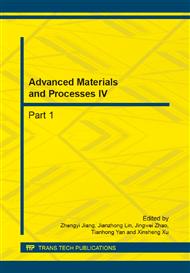p.455
p.460
p.464
p.468
p.472
p.476
p.480
p.484
p.491
Characterization and Hydrolization of Acetate Fiber by Sodium Hydroxide
Abstract:
Acetate fiber arouses a great interest by the people with a soft silk feel, bright color, weather resistant and good drapability. Acetate fiber is obtained by reacting cellulose with glacial acetic acid in the presence of acetic anhydride a trace of sulfuric acid in refluxing methylene chloride. The ester group (-COO-) in acetate fiber is converted to hydroxyl group (–OH) after hydrolysis in sodium hydroxide aqueous solution. This research explores the hydrolization of acetate fiber in sodium hydroxide solution and characterization used staining method with reactive dyes. The optimum technology of hydrolysis is sodium hydroxide mass fraction is 6g/L, the time of hydrolysis is 30min at the room temperature. The strength of the hydrolyzed fiber is decline and the moisture regain is increased compared with the acetate fiber.
Info:
Periodical:
Pages:
472-475
Citation:
Online since:
September 2014
Authors:
Price:
Сopyright:
© 2014 Trans Tech Publications Ltd. All Rights Reserved
Share:
Citation:


